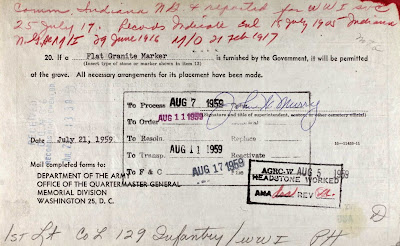My husband has a number of Irish ancestors, as reflected in his latest DNA results update (above)! They are far back in the family tree, but we have some names and some dates, plus a few places.
1. Brice Smith was born in Pennsylvania in 1756. His immigrant parents, William and Jean Smith, were from Limerick. Brice and his wife, Eleanor Kenny Smith, were the 4th great-grandparents of my husband. Two descendants born much later were named Brice in honor of this ancestor.
2. About 1740, Robert Larimer boarded a ship to sail across the Atlantic in search of a new life, age 21. Unfortunately, he was shipwrecked and forced to serve as an indentured servant to work off the cost of his rescue. After years of hard work, Robert ran away, married Irish-born Mary Gallagher, and farmed in Pennsylvania. Later, the couple and their family moved to Rush Creek, Ohio. Robert and Mary were the 5th great grandparents of my husband.
3. Thomas McKibbin was born in County Down, Ireland, and married his wife Jane Irvine in Ireland before traveling to Pennsylvania about 1812. Later, Thomas and Jane moved west to pioneer in Indiana, where both were buried. In-laws of hubby’s Larimer family.
4. Halbert McClure and his wife, Agnes, were both born in Donegal, although the McClure family is originally from Isle of Skye in Scotland. Halbert, his wife, their children, and some of Halbert’s brothers sailed to Philadelphia and then walked together to Virginia. Their descendants became farmers in Ohio and then in Indiana. Halbert and Agnes were the 4th great grandparents of my husband.
5. John and Mary Shehen, both born in Ireland but transplanted to England by 1840s. Their descendant married into the Slatter family, which ultimately left London to settle in North America during the early 1900s. Still researching their Irish roots.
6. The Short family, apparently Scots-Irish. In-laws of our Larimer family, with intermarriage in several generations. Many doctors, dentists, other professionals in this line of the family tree.
7. The Work family, originally from County Antrim, Ireland. In-laws of our Larimer family, intermarried in several generations. This branch did a lot of genealogical digging to trace the family's origins in early 1900s through mid-1900s.
8. David O’Killia or O’Kelly, possibly born in Galway, married Jane Powell in Massachusetts in 1670. 7th great-grandparents of my husband. Still researching this ancestor, a challenge for sure.


























